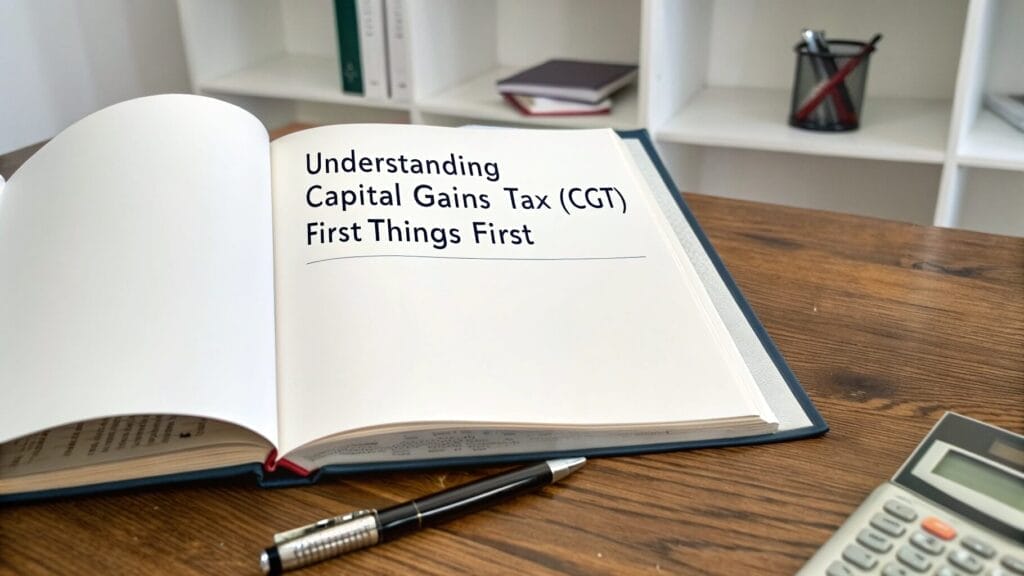Smart Strategies to Reduce Your Tax Bill When Selling Investment Property
Selling a piece of Australian investment property can be a thrilling event. Maybe you’re simplifying your portfolio, unlocking equity for your next project, or perhaps life’s events have just guided you down this road. Whatever the cause, seeing that “Sold” sticker go up makes one feel successful.
But among the festivities, there is usually a persistent worry about the tax man. Any property investor should give capital gains tax (CGT) a lot of thought; knowing how it operates and how to potentially minimise it is therefore quite important. The positive news is that you have agency. Using some clever planning and understanding of the Australian tax system will help you put ideas into action and potentially reduce the tax impact upon sale. This process is about knowing the reasonable rules and making wise decisions, not about sloppiness through gaps. Let’s discuss some crucial strategies you could explore to retain a larger portion of your earned income.
Understanding Capital Gains Tax (CGT): First Things First

Let’s quickly review what CGT actually is in the context of Australian property before we discuss tactics. Given all related expenses, selling an investment property for more than you paid for results in a capital gain. This increase is added to your assessable income for that financial year and taxed at your marginal income tax rate rather than taxed as a distinct entity.
You suffer a capital loss if you sell for less than your cost basis; typically, this loss can be used to offset other capital gains. The main lesson here is that your income tax includes CGT; thus, the more your total income in the year of sale, the more tax you may pay on the gain.
Increase Your Cost Base (Legally, Naturally!)
Maximising your ‘cost base’ from the Australian Taxation Office (ATO) is one of the best strategies to lower your capital gain. Consider the cost base as the whole sum the property has cost you over its lifetime, not only the initial purchase price. Subtracting a higher cost base from the selling price reduces capital gain.
What, then, would you want to include? The ATO permits many elements:
- Initial Purchase Costs: This covers your initial purchase price for the property plus related expenses, including legal fees paid during the purchase and stamp duty.
- Ownership Costs: Certain expenses of owning the property, including council rates, land tax, and loan interest, can be deducted; only if you have not already deducted them from rental income will they be included. Take great care not to double-dip here.
- Capital Improvement Expenses: This is one of the major ones. Think about adding a deck, remodelling the kitchen, or installing an air conditioning system—money spent on major enhancements that add lifetime value to the property can usually be included in the cost basis. Typically, we claim general repairs and maintenance as annual expenses against rental income.
- Selling expenses: Also remember the expenses connected to the sale itself! This covers commissions to real estate agents, legal expenses during the sale process, and advertising expenses.
It’s vital to keep accurate records of all these costs for the entire time you own the property. Sort those ancient invoices and receipts! An accurate compilation of such documents will greatly lower your taxable gain and greatly increase your cost basis. Given the value of extensive documentation spanning perhaps many years, many investors find that working with accounting professionals helps ensure every qualified expense is captured and correctly classified when computing the final cost basis.
Timing Magic and the 50% Discount
Your CGT result can, surprisingly, be greatly influenced by timing. The most well-known timing advantage available in Australia is the 50% CGT discount. Generally speaking, you are qualified to halve your taxable capital gain if you own the investment property for more than 12 months before selling it. For example, you will only add $50,000 to your assessable income if your computed capital gain is $100,000 and you have owned the property for more than a year. Often, the main approach to minimising the tax impact is to hold on to an investment for at least that 12-month period.
Beyond the 12-month discount, think about your income level. Selling in a year when your total income is lower—perhaps due to a career break, switching to part-time employment, or retirement—may mean a lower tax rate applies to the capital gain since it is added to your income and taxed at your marginal rate.
Using the Main Residence Exemptions (Where Appropriate)
Your main place of residence, your house, has rather different rules. Typically, you do not have to pay Capital Gains Tax (CGT) on the sale of your primary residence. What if, however, the property was your house for a spell and then an investment property? This is where possible tax savings lie as well as where things get more complicated.
The ATO follows particular guidelines for partial exemption. For example, if you rented the property for half the time you owned it, you may only owe CGT on 50% of the gain (before any 12-month discount). Australia also has the “six-year rule” for temporary absences; under some circumstances, you may rent out your main house for up to six years without forfeiting the full main residence exemption, provided you do not claim another property as your primary residence during that period.
These guidelines have particular criteria and can be complex, particularly when computing the non-exempt portion calls for valuations or knowledge of usage. Correctly navigating these nuances is crucial; often, the best way to find your eligibility for partial exemption and guarantee the accuracy of the calculations you send to the ATO is to work with a qualified taxation accountant.
Never Forget Capital Losses

Should you have other investments—such as shares or another piece of property—that you sold at a loss, these capital losses can help to offset your capital gains. First, in the same financial year, you must balance losses against gains.
Generally speaking, you can carry forward the net capital loss to balance gains in the next year if your losses surpass your gains. Although losing is unpleasant, remembering to use them could have a positive effect on your tax load from profitable sales.







